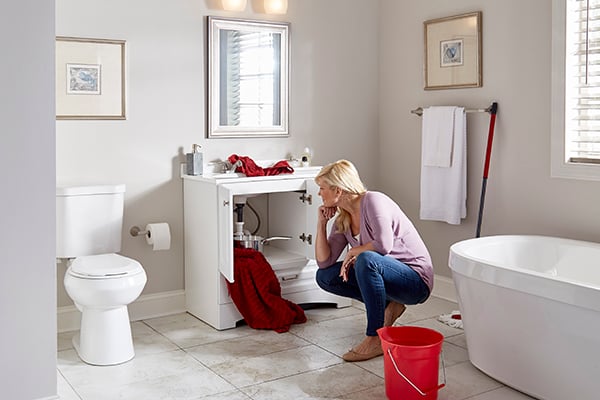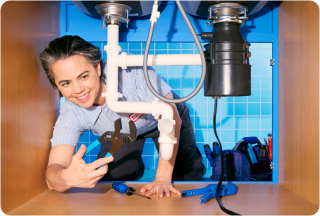There are two types of people in this world — those who have their plumbers’ numbers saved in their phones and those who don’t. For those who don’t, knowing when to call a plumber and WHO to call may mean the difference between making a plumbing situation worse and getting it taken care of correctly, and in a timely manner. Here are a few of the most common plumbing situations you may run into.
Emergency Situations
Say you’re the type of person who enjoys doing projects around the house. That small bathroom needs a new coat of paint, right? Well, the room is too small for your step ladder, so you stand on the toilet seat to cut in the wall paint at the ceiling. Just one foot on the old wall-hung sink will allow you to reach the last section to complete the job when BOOM — the sink hits the floor, and the water is spraying toward the ceiling! That would be a prime time to know how to turn the water off at the shut-off valve.
Most houses have a main cut-off valve for the water supply located inside the house. Each fixture — such as the sink, toilet, and ice maker — usually has one located on the water line at the fixture. There is also a shut-off on your outside water meter, which is the property of the water company and usually requires a special wrench to operate. Wherever you decide to cut it off, the quicker you can stop the water from flowing, the less likely major damage will occur.
Clogged Drains
Hair, grease, and tree roots are the most common causes of slow drains or clogs. You might add those to the list of things that should never have been flushed in the first place.
If you can see hair in the tub or shower drain cover or screen, you can likely pull it out yourself with your fingers or a pair of needle-nose pliers. If not, remove the stoppers from the slow drains, and hair will usually come out with them.
When it comes to a clogged toilet, use the plunger — the plumber’s friend — or an auger. Running hot water down a kitchen sink drain will usually melt grease, as well, as long as it hasn’t been building up for too long. If everything is at a standstill, though, or sewer water is backing up into the tub, tree roots could have found their way into your main sewer line. In that case, there should be a clean-out cap located outside your house that provides access to the sewer line.
The removal of tree roots from a sewer line is one of those jobs best left to the professionals. Not only do they have hi-tech equipment that can look inside your sewer line and find the problem, but they also have root cutters and backhoes to quickly expose buried lines. And, if roots have found their way in, a section of pipe usually needs to be replaced so the entrance route has been repaired. That’s not something that you want to mess with yourself.




